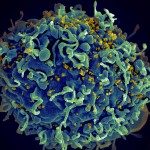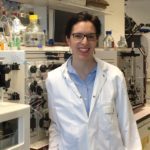Présentation
The FURTHEST proposal concerns a multidisciplinary study that focuses on simian foamy viruses (SFVs) which are the most ancient retroviruses. SFVs are prevalent in non-human primates and are transmitted to humans via contact with infected body fluids and tissues, animal bites being the most common route. So far, human-to-human SFV transmission has not been observed despite recurrent seeding from the simian reservoir, possibly because of the efficient control by the host immune system. Their genetic stability and ubiquitous tropism make SFV attractive vector candidates for gene therapy. Apart from heparan sulphate (HS), the cellular factors important for SFV entry have not been identified. The structural information on the SFV envelope (Env) protein, which is the principal fusogen and target of neutralizing antibodies (nAbs), is largely missing. Partner 2 has determined the structure of the SFV Env receptor binding domain (RBD) revealing a novel fold. Partner 1 has identified two major vulnerability sites on the RBD recognized by nAbs. Partner 3 is an expert in the identification of viral receptors. In order to unravel the SFV interactions with the human host i.e. nAbs and receptors, as well as the molecular mechanism of entry, the FURTHEST proposal focuses on these objectives: to decipher the mode of action of SFV Env-specific nAbs, to identify host factors essential for SFV entry into cells, and to determine the structures of SFV Env in pre-fusion form and bound to nAbs. Findings from each aim will represent breakthroughs on their own, with important publications and possibly patentable discovery. This proposal will generate novel findings that will 1) advance understanding of the fundamental processes such as the entry mechanism, which is important for the development of SFV as vector for gene therapy, and 2) on the Env immunogenic profile and medical consequences of zoonotic SFV infection.









